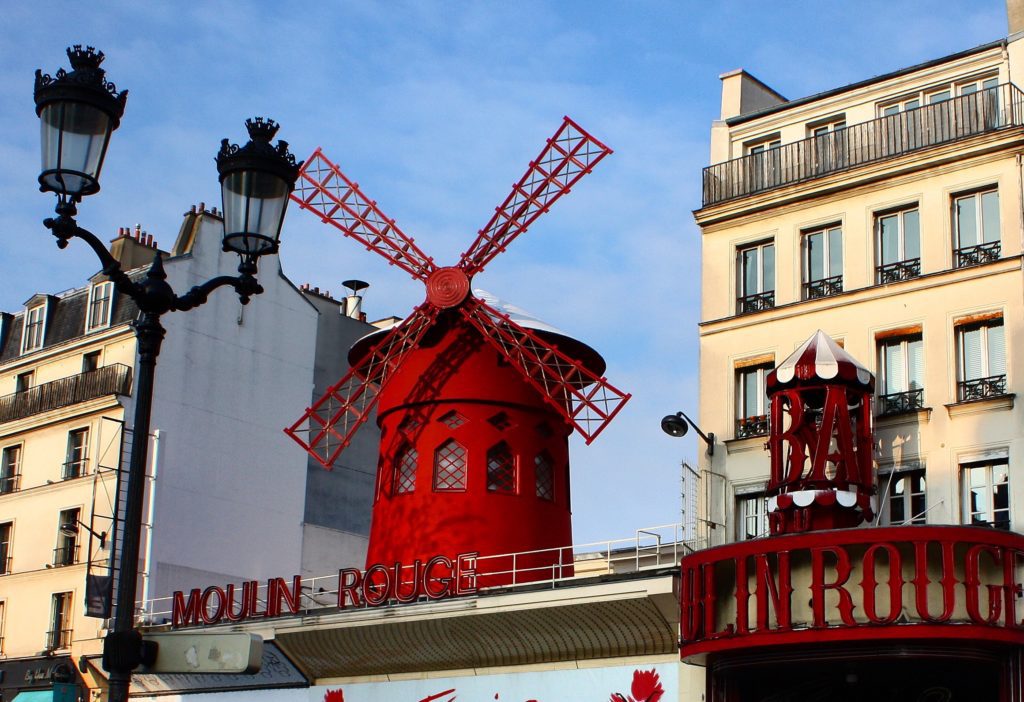
If you’ve long had the Moulin Rouge written in bright red on that Paris bucket list of yours, by all means feel free to tick it off. But be aware that the dinner-and-show cabaret is a far cry from its old dancehall days, catering as it does to tourist buses rather than nostalgia seekers.
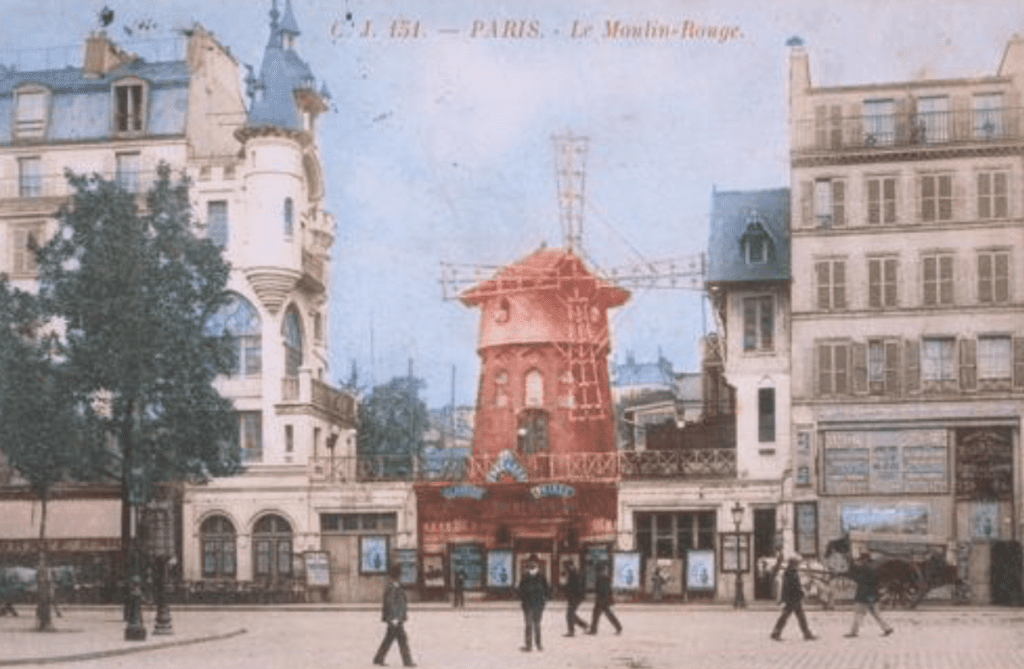
The Moulin Rouge opened in 1889, at the foot of the hill of Montmartre, a district in the process of transitioning from a country town to an outer Paris suburb. Only a few decades earlier it had been covered in abbeys, vineyards, farms and mills — as many as thirty windmills whirled away, to crush flowers for perfume, to process gypsum for Plaster of Paris, to grind wheat for bread, or to press grapes for the juice that would ferment into the locals’ preferred tipple.
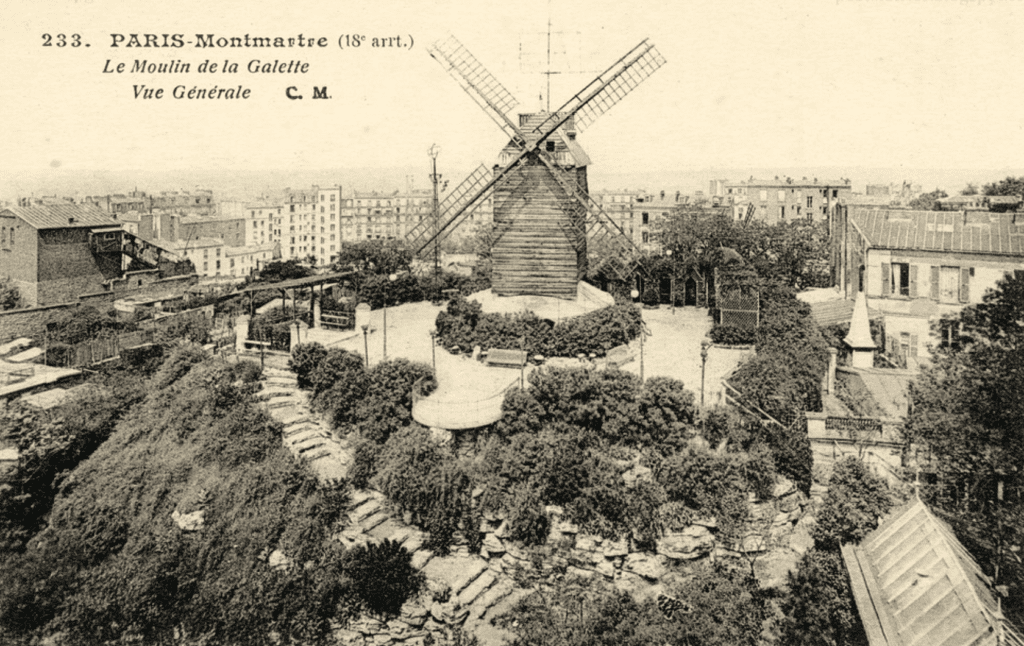
Industrialisation forced many mills to close, although some made themselves over into social hotspots, like the Moulin de la Galette, famously painted by both Pierre-Auguste Renoir and Vincent van Gogh.
In the second half of the nineteenth century, Montmartre became the spiritual home of artists; Impressionists adored its early pastoral nature, and later the Modernists loved its gritty edge. It was by this time very much a good-times kind of a neighbourhood, and while not all Parisians would deign to live in such a racy district, it was the place where they all came to party.
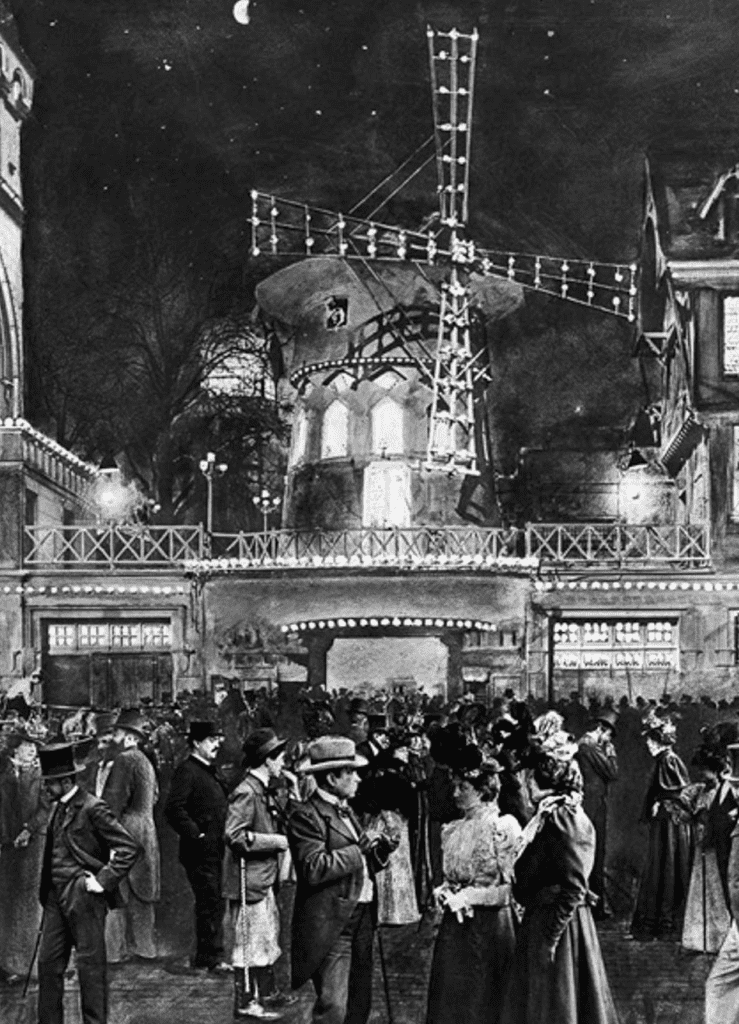
At first, the Moulin Rouge was known as the Jardin de Paris. Behind the mock red windmill — designed to evoke the old mills-turned-dancehalls uphill — was a kind of champagne garden.
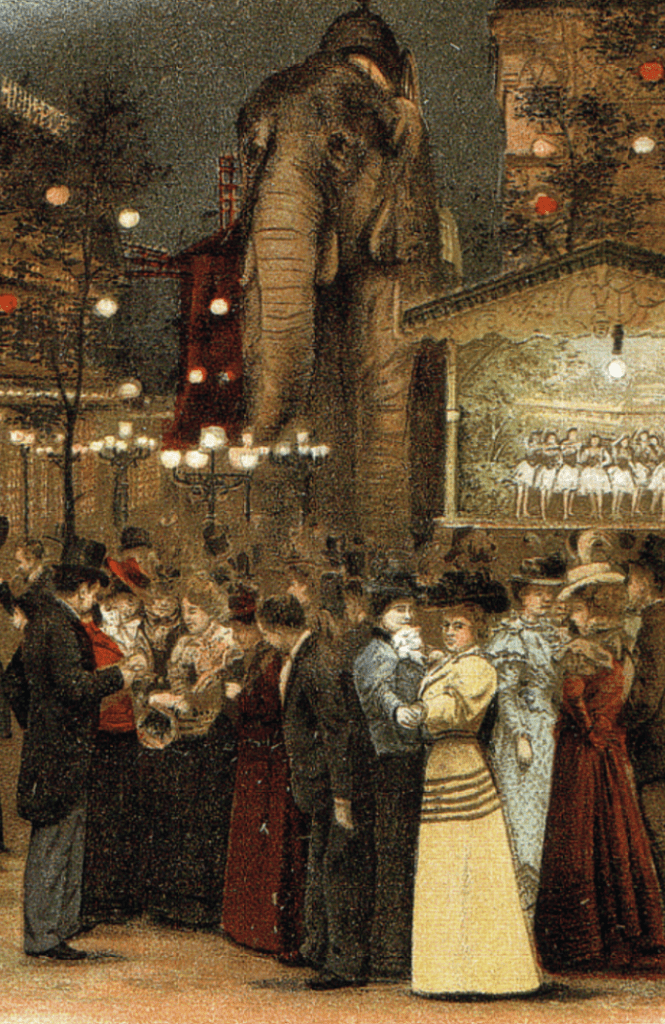
Think Belle Époque music festival; monkeys swung from the trees, which were strung with hundreds of glowing gas-lit globes, while dancers perfected the can-can on stage …
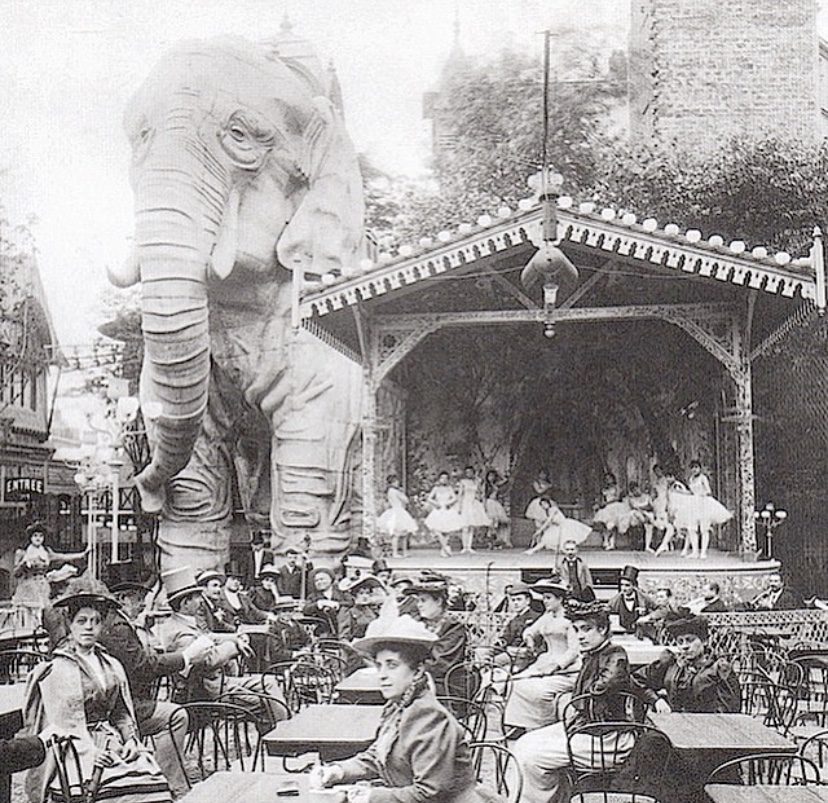
… and — most fabulously of all — there was a giant elephant (which had originally been a star of the 1889 Exposition Universelle) that contained the orchestra, private belly-dancing shows, and (rumour has it) an opium den.
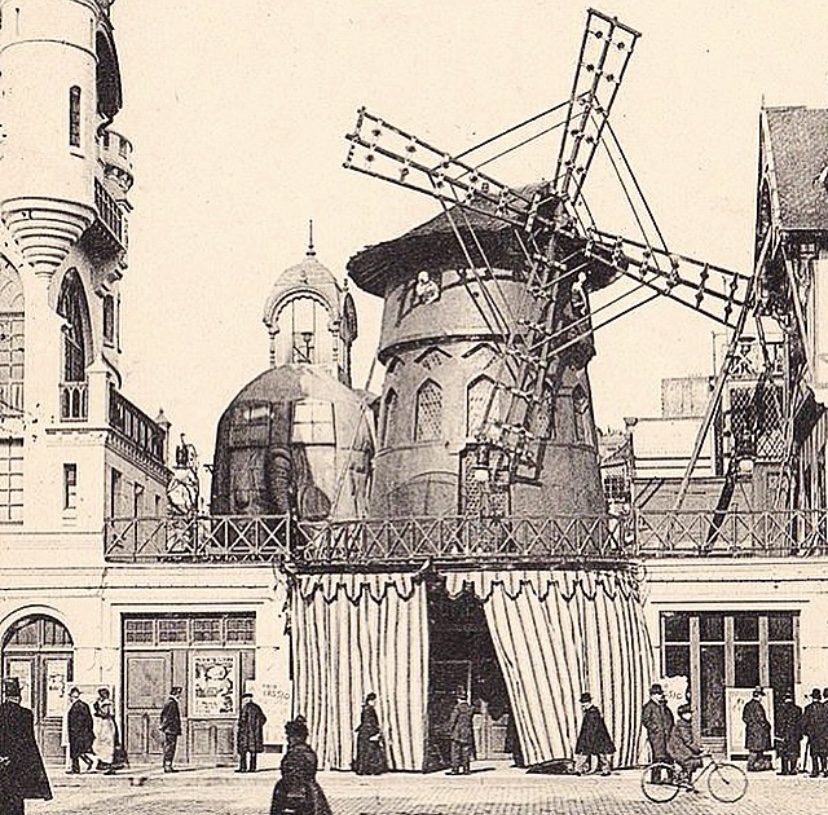
You can see the rear-end of the elephant in the above photo. Also, there used to be a rather fabulous turret-adorned fantasia of a building next door. Here’s a photo that better shows it in all its mock-medieval glory:
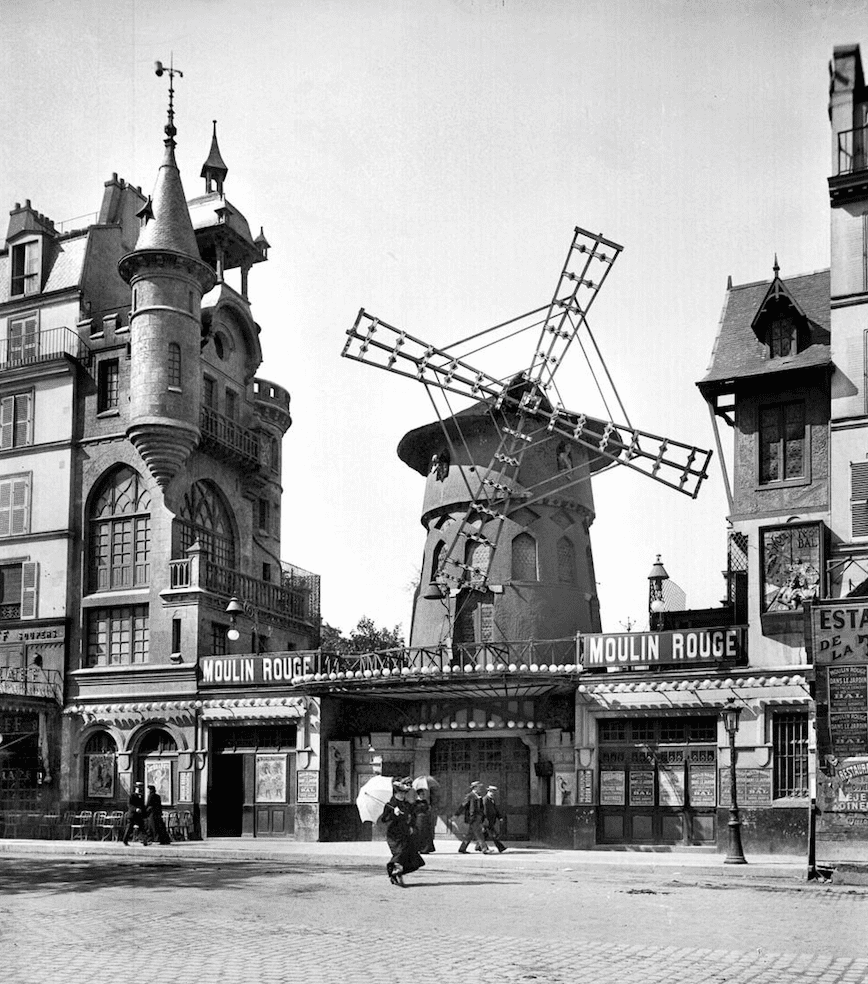
Nights here had a guinguette atmosphere. Posters used to promote fêtes galantes — a term describing the parkland parties immortalised by the pastoral paintings of François Boucher.
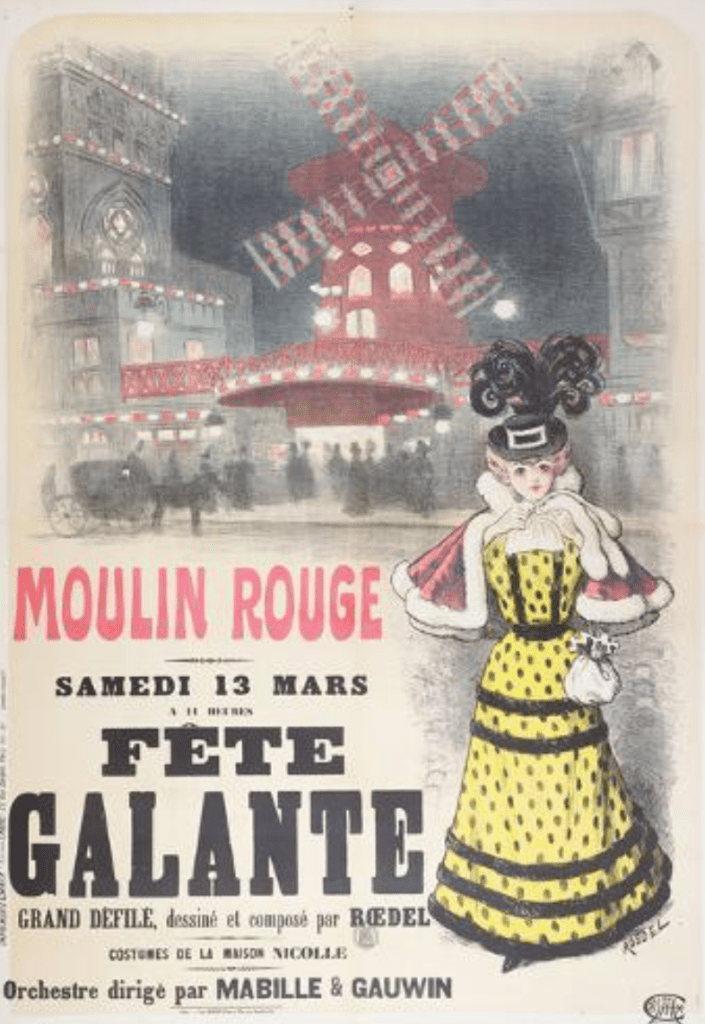
The Moulin Rouge attracted all the hottest artists in Paris (not to mention most beautiful women). Picasso and Henri de Toulouse-Lautrec were just two art stars who would find inspiration here.

Early in the twentieth century, the Moulin Rouge had a glitzy makeover, transforming from an al fresco artsy hangout into a glittering dancehall.
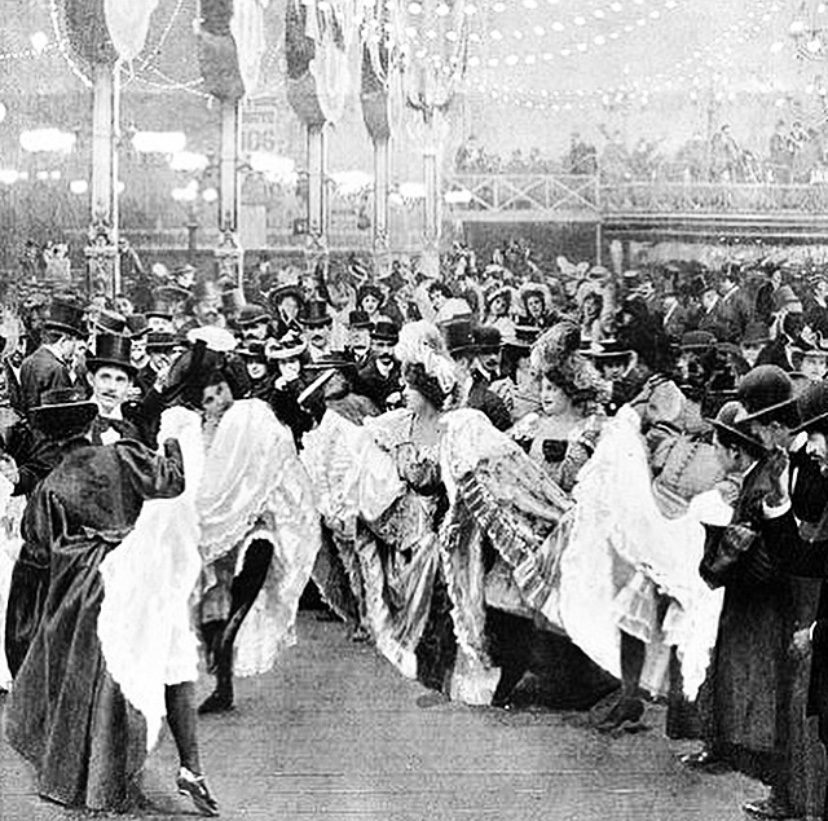
After the hall was gutted by a fire in 1915, the Moulin Rouge was once more reimagined, this time as a cinema and dance club …

… before morphing into the dinner-and-show cabaret it is today.
Fortunately the original spirit of the Moulin Rouge hasn’t completely blown away with the winds of time, and it can in fact be found right up by those famous scarlet-red sails.
Walk a few doors west of the Moulin Rouge to Cité Véron, a leafy cobbled laneway that seems to take you back centuries. Stop at 4bis, and enter the Bar à Bulles (Bubble Bar).

Here you’ll stumble upon the ultimate champagne garden, a guinguette-style jumble of vintage garden furniture shaded by maple trees and parasols, festooned with fairy lights and colourful lampshades.
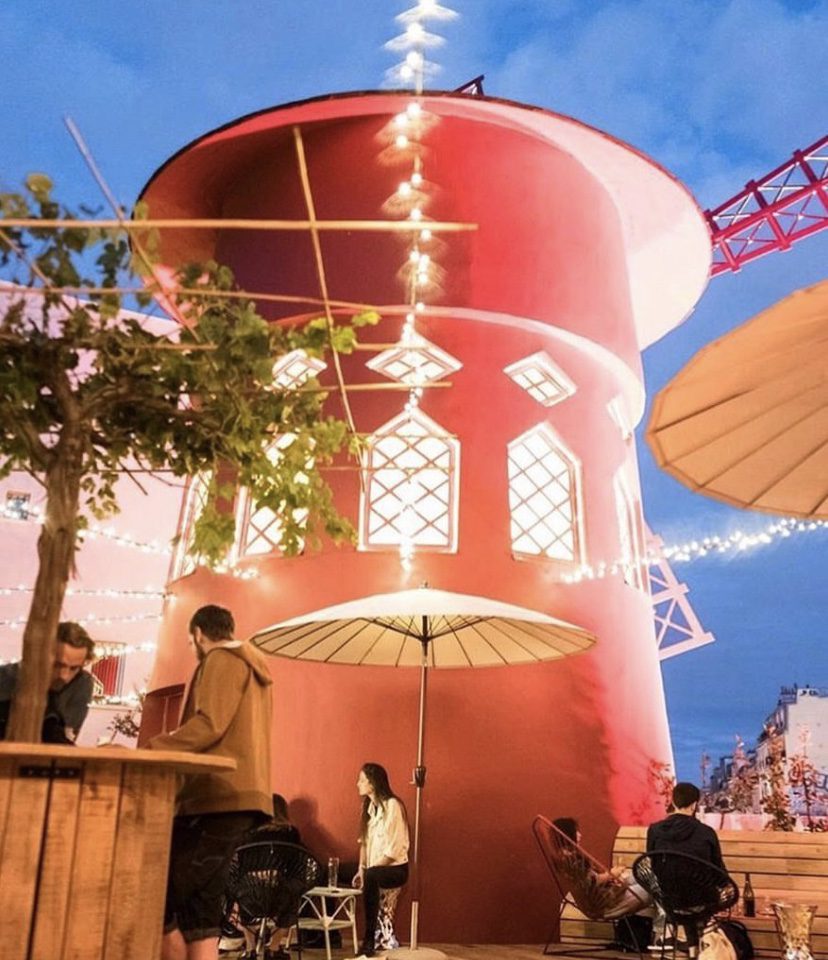
But there’s more … A second hidden terrace awaits. Go through the tapas bar and up a set of stairs, and you’ll be so close to the red windmill you can touch it. On this charmingly wooded deck, edged in greenery, sun chairs are scattered around the famous landmark, and you can look across Boulevard de Clichy to spot some old artist studios, which also speak to the earlier bohemian era of Montmartre. Stay for sunset and beyond, when the windmill glows ruby-and-gold and the bud lights sparkle. It’s a most magical place, and while there are no jumbo elephants or swinging monkeys, it’s probably as close as you’ll ever get to the breezy glamour of the old Moulin Rouge.
The Bar à Bulles is open Tuesday and Wednesday from 6.00pm to midnight, and Thursday, Friday and Saturday until 1.00am. But note: the second rooftop is not accessible from Bar à Bulles on Friday and Saturday.


Thank you, Madam ! Old romantic Paris !
“Que diras-tu ce soir, pauvre âme solitaire,
Que diras-tu, mon coeur, coeur autrefois flétri,
À la très belle, à la très bonne, à la très chère,
Dont le regard divin t’a soudain refleuri…?”